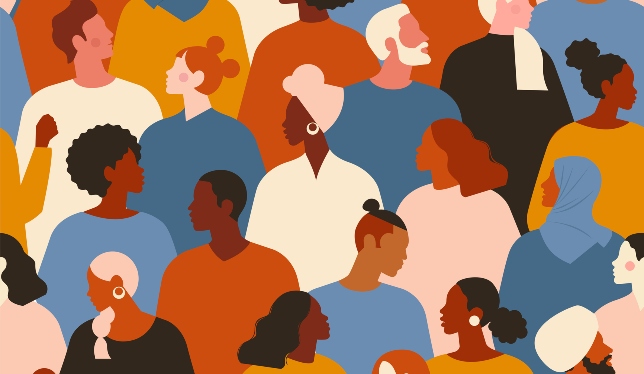Racial equity leadership in COVID times
How the pandemic has highlighted the disparities and knowledge gaps in our institutions and society.

Editor’s note: This is Malinda Smith’s inaugural column for University Affairs.
Having spent much of the past decade researching, teaching and writing about the diversity gap in Canadian university hiring, the distribution of research chairs and major awards, and especially in institutional leadership, I crossed over to the proverbial “dark side.” I became one of a few Black academics, particularly women, in a senior academic administrator role in a Canadian university. Prior to this I spent most of my academic career as the only Black woman professor in my discipline, although there are now five of us sprinkled across Canadian universities.
Taking up the position of inaugural vice-provost, equity, diversity, and inclusion, at the University of Calgary meant changing universities and cities, and finding a new home in the context of two tumultuous moments: a global pandemic and a summer of racial reckoning following the cruel death of George Floyd.
Nearly six months on, I have never met most colleagues face-to-face nor had a coffee or lunch with them in the new office that I am now building. It’s been a humbling experience as I slowly figure out, in a remote environment, how things work at my new institution. I have supportive colleagues, but I also know of new administrators who are having a tough go of it, and a few have left new roles after a few months.
This new reality of academic and administrative life is shared across generations; indeed, this moment has created a new COVID generation. The World Economic Forum’s 2021 Global Risk report talks about the frustrations and generational scarring of “pandemials,” youth in an era of isolation and lost opportunity. For those in kindergarten, high school and university, for international learners studying in different time zones, or aspiring doctoral students whose studies are on hold, or new faculty on a campus that is operating remotely, this COVID generation is experiencing unprecedented uncertainty, intensified risks and vulnerabilities, profound loss and grief, all with the potential for differential intergenerational impacts on equity-deserving groups.
This surreal space informs my research and administrative lens, as it has heightened my awareness of how disparities operate across institutional and societal spaces. It’s also highlighted the data and knowledge gaps, what we do not know about various equity groups, particularly racialized groups. Racism, racial profiling and Black deaths mobilized Black Lives Matter and especially students to put a spotlight on the “fierce urgency of now” for racial literacy to combat individual and systemic racism.
Caught on camera, we witnessed the life seep out of Mr. Floyd under the knee of a police officer, and later we heard the insults and slurs hurled at Joyce Echaquan as she lay dying on a Quebec hospital bed. We witnessed the ordinariness and cruelty of racial violence enacted by those entrusted with public safety, health and well-being. The extinguishment of these lives reminds us of the pre-existing conditions of inequities, including the shadow pandemic of violence against women, and especially the “COVID racism” against people of Chinese heritage.
This moment brought to new prominence how racism denial by high-level public officials, and the silence and complicity of others, helps to sustain an environment in which racism remains unchecked. Denial fuels ignorance of the impact of racism – and the fact of a racial hierarchy in our society and institutions – and helps to explain why so little has been done to combat it.
Canada needs a commitment to racial equity. Despite three decades of employment equity, and numerous sectoral task forces on race relations and anti-racism, it is only recently that universities have begun to develop mechanisms to combat racism and racial discrimination, to hire anti-racism advisors, and to develop racial equity strategies.
In The Equity Myth (UBC Press, 2017), my co-authors and I found that, “whether one examines representation in terms of numbers of racialized and Indigenous faculty members and their positioning within the system, their earned income as compared to white faculty, their daily life experiences within the university as workplace, or interactions with colleagues and students, the results are more or less the same. Racialized and Indigenous faculty and the disciplines or areas of their expertise are, on the whole, low in numbers and even lower in terms of power, prestige, and influence within the university.”
During the summer of racial discontent many universities issued anti-racism statements, marking the first time in modern memory that so many institutions publicly named racism as a problem they opposed, and needed to address. Some university leaders embarked, for the first time, on what they called “listening and learning” sessions with Black students, faculty and staff. Some created anti-racism advisors and anti-Black racism action plans, while others continue to work on strategies to achieve racial equity. A number of promising practices have emerged, which I’ll enumerate in a later column, but there are also some worrying fault lines.
One fault line relates to design, infrastructure and resources. In many instances these initiatives are short-term and one-offs. New advisors are under-resourced, not connected to an EDI or institutional infrastructure, or to the larger institutional strategic plan. They will have to be monitored to see what happens when the spotlight shifts to the next big issue.
A second fault line is older, that between the dominant pursuit of gender equity and the relationship to so-called “other equity groups.” These have been separate and unequal tracks within institutions for decades. Racial equity is exposing data and knowledge gaps, need for culture change, and qualified personnel with racial literacy and anti-racism competency. Disrupting old patterns creates discomfort and may lead to resistance and backlash.
A third fault line relates to the relationship between anti-Black racism initiatives and the implications for Indigenous engagement, infrastructure and resourcing. There is worry among some that anti-Black racism initiatives will be used to displace or stall Indigenous initiatives or vice versa.
It is unclear whether, in the rush to “do something,” universities have thought through the relationship between these initiatives. If solidarities are not understood, if these relationships are not well-facilitated, the fears and tensions can lead to conflict and even stall the modest efforts being undertaken to achieve a more equitable, diverse and inclusive campus.
Featured Jobs
- Indigenous Studies - Assistant Professor, 1-year termFirst Nations University of Canada
- Electrical Engineering - Assistant Professor (Electromagnetic/Photonic Devices and Systems)Toronto Metropolitan University
- Economics - Associate/Full Professor of TeachingThe University of British Columbia
- Fashion - Instructional Assistant/Associate Professor (Creative & Cultural Industries)Chapman University - Wilkinson College of Arts, Humanities, and Social Sciences
- Electrical and Computer Engineering - Assistant/Associate ProfessorWestern University



















Post a comment
University Affairs moderates all comments according to the following guidelines. If approved, comments generally appear within one business day. We may republish particularly insightful remarks in our print edition or elsewhere.
1 Comments
The fact that Black is capitalized and white is not tells you all you have to know about the equity bunch.